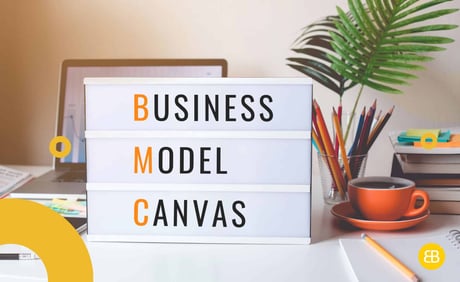Table of Contents
5% of business owners admitted in a survey to not creating a business plan. However, of those who created a business plan a third had secured a loan or business capital and more than half had significantly grown their business since creating their business plan.
So why haven’t you created your business plan yet? Do you have visions of needing to write hundreds of pages of conjecture? Don’t worry, we’re going to cover an easy to fill out, a one-page business plan that will point you in the right direction.
With the business model canvas, you will fill out nine sections that outline the most important features of your growing business. We will cover each one and give a tip for how you can effectively create each section. Keep reading for a comprehensive guide to creating your business model canvas today.
Tip 1. You Must Solve a Problem or Fill a Need
As you look at any business model template, you might be tempted to start at the top of an outline and start filling it in. Or with a business model canvas, you might be tempted to start on the left (or right) and work towards the other side.
However, our first tip for you is to start in the middle. The middlebox in the business model canvas asks what is your value proposition. And this is simply a way to ask you what value are you providing your customer, or what problem are you solving?
Start with what value you provide to your customer and this will provide the foundation for filling in the rest of the sections. Spend five to ten minutes brainstorming what problem you solve or need that you fill for your customers.
Once you can specifically outline what you sell and why your customers should buy it, you’re ready to move on.
Tip 2. Know Your Customers Better Than Anyone Else
You’ve heard of creating your customer avatar. You know that you need to do this, but you also have so many other pressing matters to attend to, how can you waste time thinking about a fake person?
The answer is simple, if you don’t know who you’re serving, how can you know how to solve their problems? You’ve spent the time to brainstorm what problem you’re solving, now you need to map out who you’re helping.
You need to know everything about them, including what keeps them up at night and what their deepest desires are. Creating your customer segments goes beyond demographics and surface information, you need to be able to quickly show at a glance exactly who your target audience is. When you do this, the rest of the sections, especially your marketing, will be much easier to pinpoint.
Your customer needs to think that you’re in their head and that you know exactly what they need. When they do, they will trust you enough to pay you for your product or service and they will trust that you can solve their problem.
Tip 3. Establish How You’ll Get Your Product to Your Customer
Your distribution channels must be established early. This will narrow down your production and marketing so you can narrow your niche.
Will you sell physical products? And if so, will you have a drop shipper or will you warehouse your products? Where will you sell your physical products, will you wholesale to small boutiques or will you have direct sellers marketing directly to the customer?
Or will you sell digital products online? If you choose this route, will you house your products on a third-party website such as Etsy or eBay? Or will you strictly sell from your website directly to your customers?
Third, are you selling a service? And if so, will it be in person or virtually? Are you cleaning homes? This will need to be done in person at their home. Are you a life coach and can you offer your service over Zoom calls or will you still choose to go to their home or office to work with them in person?
All of these questions come down to what kind of business you want to start and how it will affect your life. If you don’t want your garage to turn into a warehouse, choose dropshipping. If you don’t want to be tied to a location, choose coaching through virtual means.
Tip 4. Focus on the Customer Journey
The next section you’ll fill out in your business model canvas is the customer relationships, and in this section, you’ll want to focus on the customer journey. Namely, how will you guide your customers from awareness to research and consideration and finally the decision and customer loyalty?
When you focus on the customer journey you can build a solid and transparent relationship with your customers based on trust.
Tip 5. How Will You Actually Make Money?
At the end of the day this is the main question, how will you make money in your business? The best way to figure this out is to interact with your customers, know what they need, and learn the best way to provide it.
There are several great business models available and you should choose the best one for your desired business, lifestyle, customer, and delivery method. Again, go back to your foundational sections, did you decide you want a location-free business that sells a service, or did you decide you don’t mind creating a warehouse and shipping your product around the world? These will have different marketing tactics and cost variables so you need to know this information now.
Take the time to determine how your business will make money, are you selling software as a service to a business, or are you selling weekend rafting trips to families? If your customers are another business in a B2B model you will market your products very differently from the business working with busy moms or weekend warrior athletes.
You need to know how you’ll make money before you begin to create any copy or run any ads.
Tip 6. What Resources Do You Need Before You Can Move Forward?
You now know the foundation for the business you want to create. You know what you’re selling, to whom, and how you’ll deliver it. Now, you need to look at your desired business model and determine what you still need to make it happen.
Think of resources in terms of people, money, information, and physical objects. So for example, back to our rafting trips for families example. Do you have the rafts you need? Will you be the guide or will you hire guides? If you want to be the guide, do you have the skills and training needed or will you need to acquire them first?
Map out the exact resources you will need and whether or not you have them already. Then begin to create a plan for how you’ll acquire those resources. Do you need capital for financing your business? Who will you reach out to about your business and how can you share this business model canvas you’re creating to show them you are serious about this venture?
Tip 7. Determine Your Suppliers and When You’ll Need Them
Not every supplier relationship is needed from day one. But you should have an idea about who you need to work with and how you’ll establish a relationship with them. Doing this step now will ensure that you don’t reach year three and realize you haven’t built up the proper relationship with a key supplier you now need to work with.
You don’t need to know exactly who you’ll work with, just what you will need and estimate when you’ll need it. This way, if you know that you want to eventually build a network of joint ventures partnerships to share your brand, you can keep your eye out for natural relationships you’ll build along the way.
Then when you’re ready for explosive growth at the appropriate time, you will be ready to reach out to those already in your network and pitch a JV launch to them. It will make your growth much more seamless when you know what you need and build relationships naturally to acquire them.
Tip 8. Organize Your Priorities
What are your key activities right now to move your business forward? Your key activities include those income-producing actions that will move your business forward.
These business activities can be broken down into various categories such as operations and production, sales, and marketing, as well as administrative and problem-solving tasks. Break down your activities and create a schedule to ensure everything gets done and your key actions don’t get missed in the daily grind.
Tip 9. You Need a Budget
What are your operating costs? What are your most important costs and what are your most expensive costs? You need to know this information before you start asking for loans or pitching any investors.
What are your variable costs and what are your fixed costs? What costs will you need to scale as you grow? Think long-term, what capital will you need to move the needle within your business?
When you walk into the next investor meeting asking for start-up capital, they will be impressed that you know your numbers and have a reasonable budget.
And now you have all nine sections of your business model canvas filled out. Now you’re ready to take your business to the next level and see true success.
Your Keys to Creating a Lean Business Model Canvas
Now you have a business plan that you can quickly implement and watch your business soar. With the business model canvas, you don’t need to spend months (or years) creating a monstrous business plan that will gather dust.
Instead, you have created a useful roadmap you can follow to build your business. Here at EB Pearls, we help business owners just like you create the business of their dreams. And we want to help you grow your audience and scale your business so you can live the life you love.
To find out what we can do to help you move towards success in your business, and to schedule your free consultation, contact us today.

Akash, COO at EB Pearls, blends technical expertise with business acumen, driving the creation of successful products for clients.
Read more Articles by this Author
